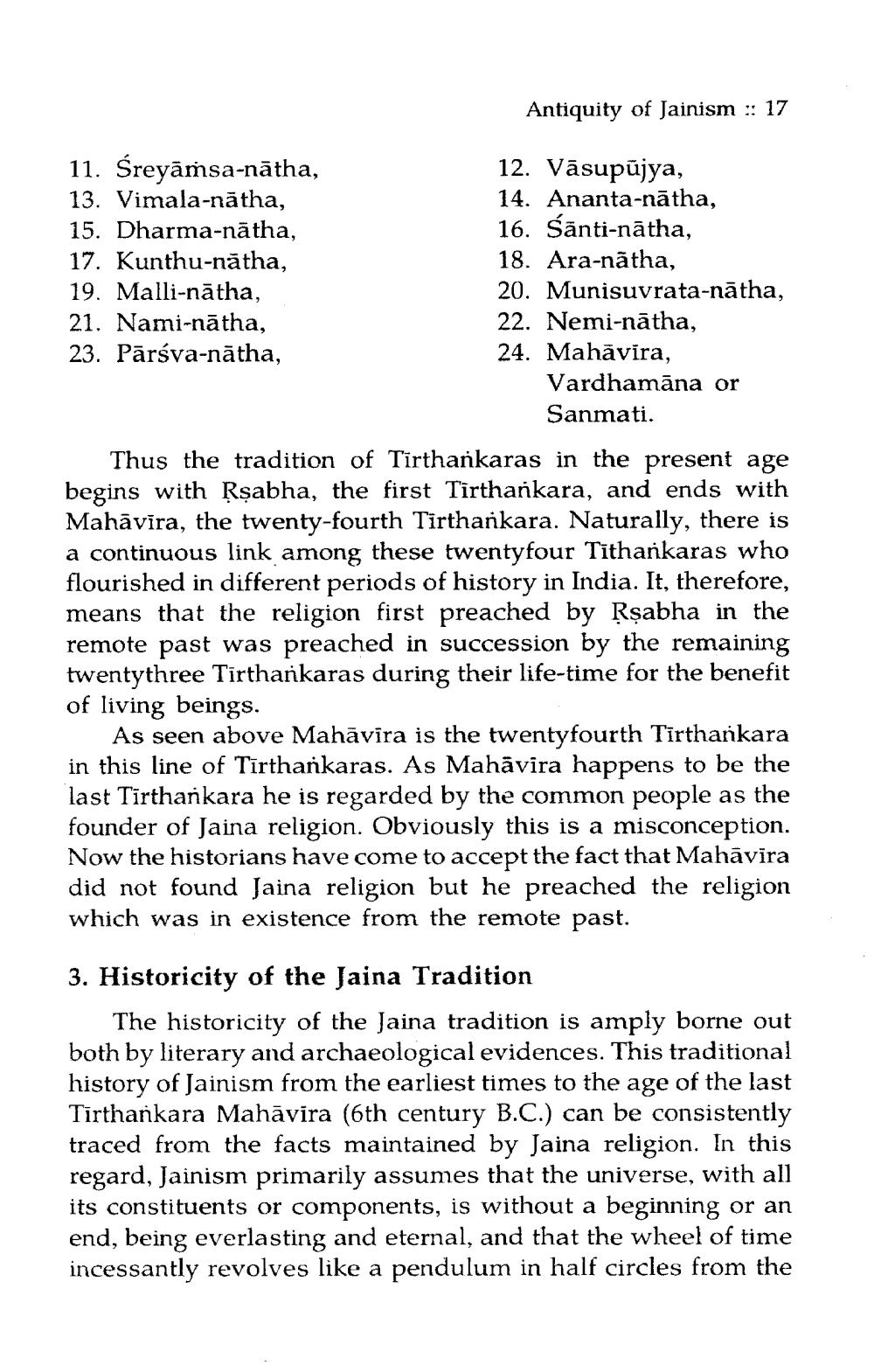________________
Antiquity of Jainism :: 17
11. Sreyāṁsa-nātha,
12. Vāsupujya, 13. Vimala-nātha,
14. Ananta-nātha, 15. Dharma-nātha,
16. śānti-nātha, 17. Kunthu-nătha,
18. Ara-natha, 19. Malli-nātha,
20. Munisuvrata-nātha, 21. Nami-nātha,
22. Nemi-nātha, 23. Pārsva-nātha,
24. Mahāvira,
Vardhamana or
Sanmati. Thus the tradition of Tīrthankaras in the present age begins with Rşabha, the first Tirtharkara, and ends with Mahāvīra, the twenty-fourth Tīrtharkara. Naturally, there is a continuous link among these twentyfour Tīthankaras who flourished in different periods of history in India. It, therefore, means that the religion first preached by Rşabha in the remote past was preached in succession by the remaining twentythree Tirthankaras during their life-time for the benefit of living beings.
As seen above Mahāvīra is the twentyfourth Tīrthankara in this line of Tīrtharkaras. As Mahāvira happens to be the last Tīrthankara he is regarded by the common people as the founder of Jaina religion. Obviously this is a misconception. Now the historians have come to accept the fact that Mahāvira did not found Jaina religion but he preached the religion which was in existence from the remote past.
3. Historicity of the Jaina Tradition
The historicity of the Jaina tradition is amply borne out both by literary and archaeological evidences. This traditional history of Jainism from the earliest times to the age of the last Tīrthankara Mahāvira (6th century B.C.) can be consistently traced from the facts maintained by Jaina religion. In this regard, Jainism primarily assumes that the universe, with all its constituents or components, is without a beginning or an end, being everlasting and eternal, and that the wheel of time incessantly revolves like a pendulum in half circles from the




